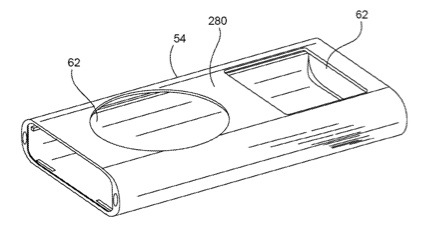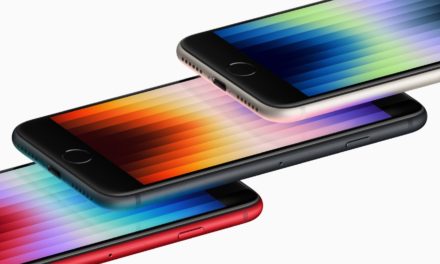An Apple patent (number 20120069517) shows that future iOS devices may sport more glass components. The patent is for a handheld computing device that includes an enclosure having structural walls formed from a glass material that can be radio-transparent.
The enclosure can be formed from a hollow glass tube or two glass members bonded together. A laser frit bonding process may be used to hermetically seal the two glass members together to create a water resistant electronic device.
Here’s Apple’s summary of the invention: “In recent years, portable electronic devices, such as laptop computers, tablet computers, PDAs, media players, and cellular phones, have become compact and lightweight yet powerful. As manufacturers have been able to fabricate various operational components of these devices in smaller sizes, the devices themselves have become smaller. In most cases, despite having a more compact size, such components have increased power as well as operating speed. Thus, smaller devices may have much more functionality and power than larger devices of the past.
“One design challenge associated with the portable electronic devices is in techniques for mounting structures within the portable computing devices. Conventionally, the structures have been laid over one of the casings (upper or lower) and attached to one of the casings with fasteners, such as screws, bolts, and rivets. That is, the structures are positioned in a sandwich like manner in layers over the casing and thereafter fastened to the casing. Such an assembly process can be both time consuming and cumbersome.
“Another design challenge is to provide an aesthetically pleasing enclosure that is functional for the intended purpose of the device. With more devices being capable of wireless communications, a radio transparent enclosure would be beneficial, as it would allow components, such as antennas, to be positioned inside the enclosure. Users also desire an enclosure that can withstand mishaps. Thus, a water-resistant and scratch-resistant enclosure would also be desirable.
“Therefore, it would be beneficial to provide improved enclosures for portable computing devices, particularly enclosures that are functional and aesthetically pleasing yet durable. In addition, there is a need for improvements in the manner in which structures are mounted within the enclosures. For example, improvements that enable structures to be quickly and easily installed within the enclosure, and that help position and support the structures in the enclosure.
“This paper describes various embodiments that relate to systems, methods, and apparatus for providing an enclosure suitable for a portable computing device. In particular, at least portions of the enclosure can be transparent or at least translucent and as such can be formed of materials such as glass. It will be understood that the enclosure can be formed of glass but does not need to have any transparent portion. In other words, the entire glass enclosure can be opaque. In other embodiments, the glass enclosure can be fully transparent or partially transparent or translucent.
“According to one embodiment, a portable computing device capable of wireless communications is described. The portable computing device includes an integral and substantially seamless enclosure that surrounds and protects the internal operational components of the portable computing device. The enclosure includes a tube like main body that is extruded in its entirety with glass material that permits wireless communications therethrough.
“According to another embodiment, a portable electronic device is provided. The portable electronic device includes a substantially seamless enclosure that surrounds and protects the internal operational components of the portable electronic device. The enclosure also includes at least one structural wall formed from a glass material.
“According to yet another embodiment, a method for manufacturing a portable electronic device capable of wireless communications is disclosed. The portable electronic device surrounds and protects internal operation components. The method can be carried out by the following operations: providing an integral and substantially seamless enclosure extending along a longitudinal axis, sliding at least one operational component into an internal lumen defined by the enclosure, and securing the operational component to the lumen when the operational component is in its desired position within the lumen. The enclosure includes a structural wall defining a shape or form of the portable electronic device and is formed from a glass material that permits wireless communications therethrough.”
The inventors are Christopher D. Prest and Emery A. Sanford.
Also appearing at the U.S. Patent & Trademark Office are Apple patents for:
° Methods to control reconfiguration of multiple radio access bearers in a mobile wireless device connected to a wireless network (patent number 20120069750). The mobile wireless device is connected to the wireless network through a voice connection and a data connection simultaneously. The data connection is concurrently active with the voice connection. Transmission of one or more signaling messages for the data connection is delayed until the voice connection terminates. Representative signaling messages include messages that reconfigure a radio access bearer supporting the data connection and messages estimated to exceed a pre-determined transmission time interval. Longda Xing and Jianxiong Shi are the inventors.
° Systems, methods, and non-transitory computer-readable storage media for altering pitch of a note played on a musical instrument keyboard of a touch-sensitive electronic display (patent number 20120071994). An exemplary method includes playing a note of a key of the keyboard on the touch-sensitive display touched by a user. The method includes continuously altering the pitch of the played note as the user slides a point of contact on the touch-sensitive display horizontally from the key being played across adjacent keys to a second key, in accordance with the keys being contacted during the sliding of the point of contact. In a further aspect, the method includes detecting motion of user contact in a direction other than horizontally across keys of the keyboard, such as vertical, and activating a sound effect in addition to pitch alteration in response to the detection. Example sound effects include tremolo, vibrato, echo, and sound filter effects. Gerhard Lengeling is the inventor.
° A system that operates a processor in a multi-core processor system (patent number 20120072749). During operation, the system detects the creation of an asynchronous wakeup event for the processor. In response to detecting the creation of the asynchronous wakeup event, when the processor is subsequently placed into an idle state, the system configures the processor to resume operation at a reduced frequency that is a fraction of an operating frequency for the multi-core processor system, wherein the reduced frequency allows more power to be allocated to other processors in the multi-core processor system. The inventors are David G. Conroy and Guy Sotomayor.
° A system that facilitates power management in a multi-core processor. During operation, the system detects a change related to a number of active processor cores in the multi-core processor (patent number 20120072746). Guy Sotomayor is the inventor.
° A light isolating protective cover for a small form factor electronic device (number 20120070140) A portable device has a rear facing camera assembly and a front facing display assembly that includes at least a protective cover layer, a display stack that includes a plurality of display components arranged in a plurality of interconnected layers, the display stack providing an imaging service, and a flat support chassis arranged to provide support for the display stack. In the described embodiment, a protective cover can wrap around and protect at least the rear portion of the portable device without adversely affecting an image capture process carried out by the rear facing camera assembly. The inventors are Chong Yip Chow, Hongqin, Shizhe Shen and Michael DiVincent.





